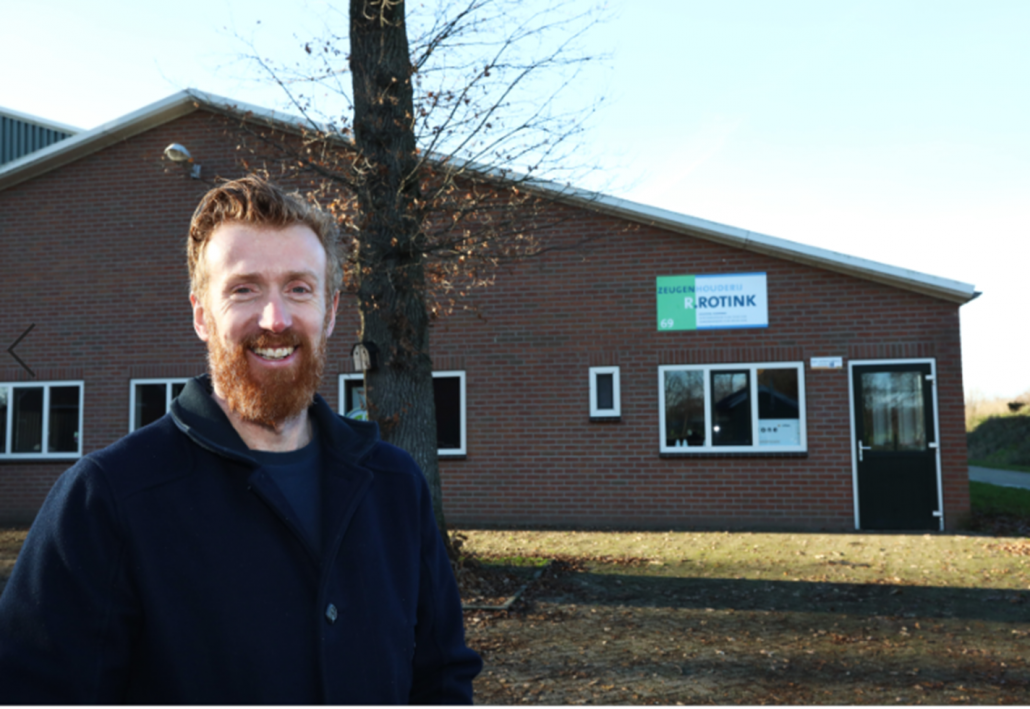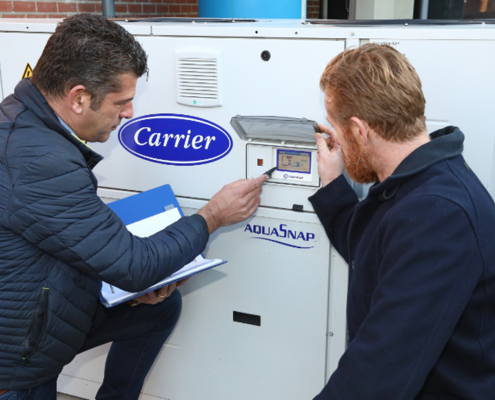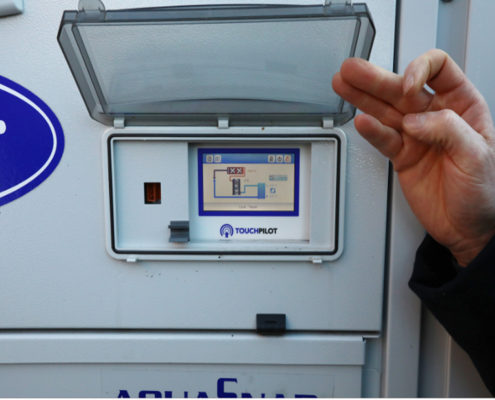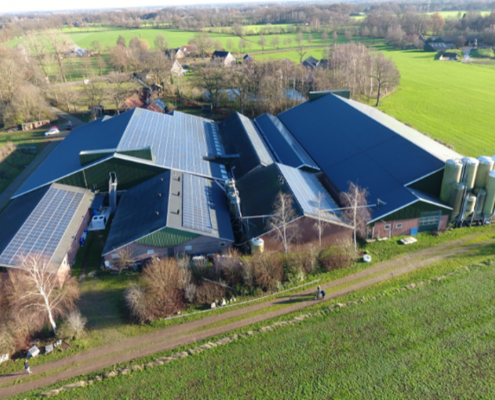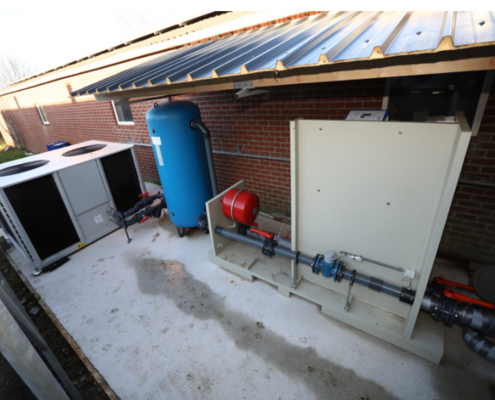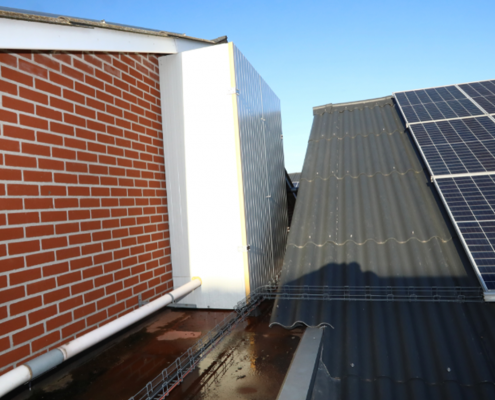Optimum Climate with Mechanical Cooling – Rik Rotinks farm
The sow farm of Rik Rotink B.V. is located in Barlo, municipality Aalten in the Netherlands. The farm is home to 1000 sows that performs top sport when it comes to production continuity. Rik a passionate entrepreneur always wants the best for his animals and staff. Thanks to good management, there is a serene calm on this farm. But here they work very hard in the barn to produce 34 piglets per sow per year. The piglets are sold to the German market.
A suitable solution
Rik took the decision five years ago to install adiabatic cooling to keep piglet production up, even after the hot summers, and he didn’t want any returns in his four-week system. The spray cooling did cool down the house but Rik noticed that it was difficult to distribute the water in the incoming air. After trying this for a few summers, the result was not what he expected. There was a high moisture percentage in the barn and returners were still a problem.
After a visit from climate consultant Frans Lemans of Klima Plus, the advice was to move to dry cooling. Mischa Hermkens of Inno+ was invited to offer a suitable solution. They chose a chiller with steel heat exchangers to cool the farrowing and gestation sows.
Inno+ installed an air-water cooling machine with a cooling capacity of 160 kW. Steel heat exchangers were mounted in front of the air inlets of the farrowing and gestation sows, mainly because these are available in a custom size and the build required a level of flexibility. The chiller supplies 10⁰C to the heat exchangers via a pump skid and buffer tank and after being warmed by the incoming air returns at 15⁰C. The water in then cooled again before being returned to the inlets.
So what does this mean for the incoming air?
During the hot period last summer, the incoming air went from +35⁰C back to 17⁰C behind the heat exchanger. The air was then warmed up by animal heat and sun infiltration to 23⁰C with a Relative Humidity of 65%. The climate was so comfortable in the house the staff on site even joked they should move the canteen to the main corridor. The average cooling period per year is 2000 hours when it is warmer than 18⁰C outside.
Evidence that it works
After an evaluation meeting in December, Rik was very pleased with the initial results. For the first time, he has had no returns and there are as many very healthy and strong piglets with the sows than ever, which probably guarantees continuity of production.
However, Rik wants to have worked with this system for another summer before he can draw a final conclusion. For the time being, he has 0.4 piglets per sow more due to cooling in the warm period of the year. This means a gain of approximately 400 piglets.
At Inno+ we can remotely follow, monitor and tune the installation to optimize the machine and the condition of the air. As a result, we also saw the ventilation capacity in the house decrease by 30%. The system works mainly on the energy generated by the solar panels, so the comfort pays for itself in a relatively short time.
And when the cooling machine is no longer needed, a nearby potato grower rents it from October to April.
- For more information about this system please contact Mischa Hermkens – mhermkens@inno-plusssytems.com . Mobile: +31 (0) 611904733
- For other systems from Inno+ refer to our website product pages, fill out the form below or call on 31(0)77 – 4657360.


